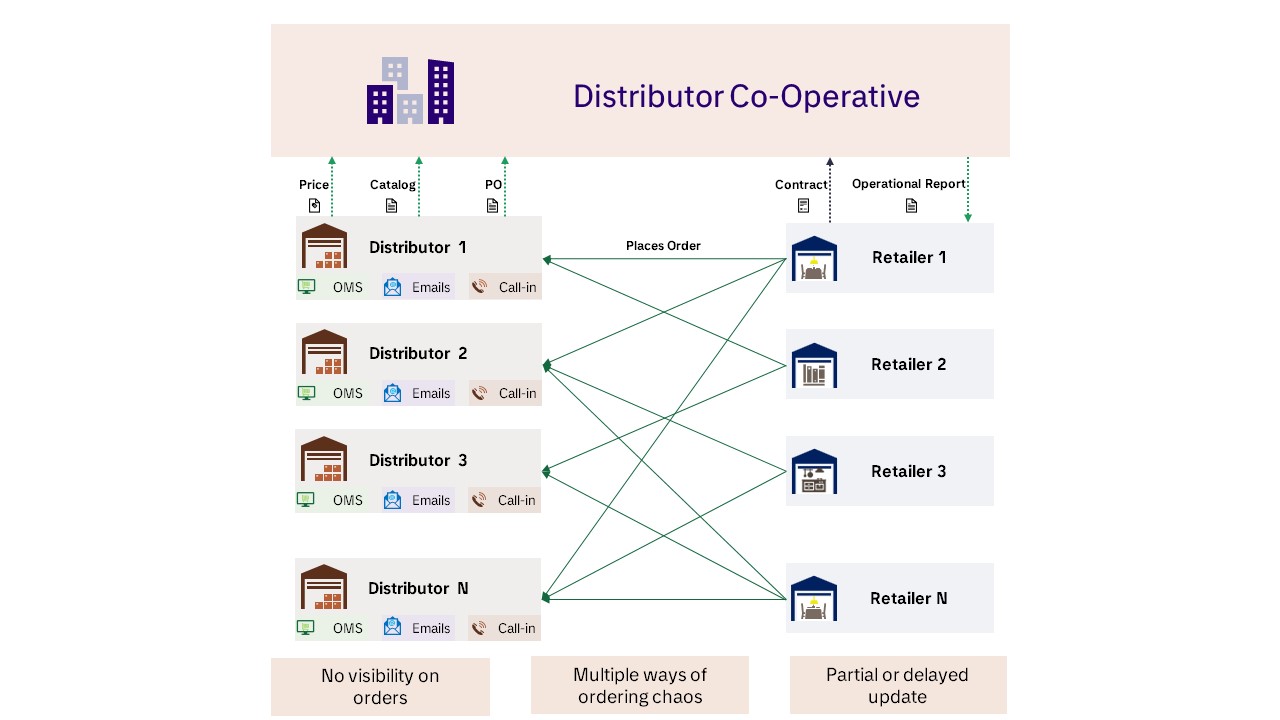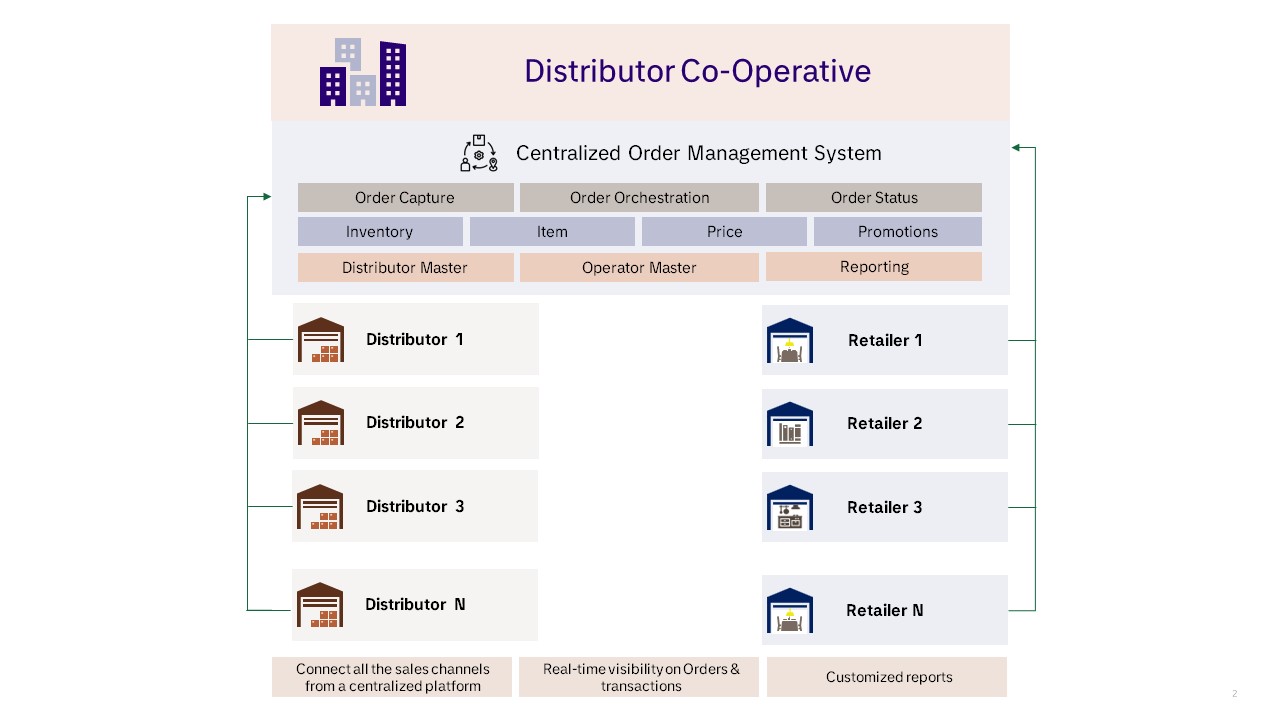
Cardinal Transformation in the Food Distribution Sector: A Point-of-View
Centralized ordering is effective for customers with multiple franchisees
The Global Food service market size is poised to grow from USD 2395.03 Billion in 2022 to USD 5423.59 Billion by 2030 at a CAGR of 10.79% in the forecasted period.
It is true in the US as well; food service market is expected to have a consistent growth with various factors influencing such as the changing consumers preferences, dining out, and online food delivery alongside rising technological advancement in the food industry, which are significant factors driving the growth of this market.
In the US , to cater to the food service market, they work with Food Distribution Co-operatives who bring the suppliers, distributors and retailers under a single umbrella. They play a vital role in providing access to the high-quality, sustainable food from the Nation’s best distributors to the food servicers at competitive prices. The food distribution co-operatives are member-based groups having their own registered suppliers, manufacturers, distributors, and retailers (restaurants, hospital kitchens, educational institutions & organizations, etc,). Distributor members oversee transporting all the products from manufacturers/ suppliers to restaurants caterers, institutions, and other businesses.
Co-operatives provide a lot of advantages to their buyers including subsidized prices, reserved inventory, discounts, fixed prices throughout the year. Their distributors, suppliers and manufacturers are benefited also with trainings on selling skills, promotional opportunities, incentives & coupons.
However, there seems to be a challenge in the way these cooperatives are structured when it comes to uniformity of order placement – each of the distributors/wholesalers has their own ordering platform, the co-operative do not have visibility of the orders placed, timely validations and distributor, supplier and operator on-boarding, off-boarding, and calibration.

One of the best ways to combat this challenge is to introduce a centralized ordering platform for cooperatives.
With the centralized ordering platform co-operatives will have real-time visibility from Inventory to sales order, delivery to payment, pricing, and promotions. This will also reduce the chaos for the customers to place and track orders at various platforms.
Centralized ordering is effective for customers with multiple franchisees, too. With more techs using parts and multiple counter orders happening every day, business will meet the distributors/vendor thresholds more easily and frequently. The customer manager can check in any time of the day to gauge how things are going and can make orders any time, as necessary.

The process of distributors sending the catalog, price information before the sales and purchase order files after the sales, as well as the co-operatives providing the operational reports to their customers, is a time-consuming and a delayed process. It is therefore imperative that these co-operatives play a more active role in order orchestration which would result in real-time updates, 100% transaction updates, and timely validations and calibrations of the parties involved.
References:
skyquestt.com, fortunebusinessinsights.com, ncbaclusa.coop, verifiedmarketresearch.com, posusa.com




